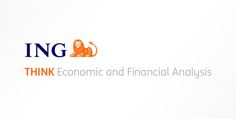Oracle releases AI Database 26ai with built-in artificial intelligence
One could be forgiven for thinking that President Trump has now turned his attention to disassembling the BRICS political grouping. India, Russia and Brazil are squarely in focus currently. And benign market conditions in August clearly rely on no deterioration in the current US-China detente. Away from geopolitics, the focus today is on US ISM services
USD: BRICS in Focus
The US dollar is consolidating after Friday’s heavy losses. And the greater market interest in the short term is President Trump’s newfound focus on India. Here, the threat of secondary sanctions became more real yesterday as Washington squarely turned its attention to India’s purchases of Russian crude oil - a substantial 1.7 million barrels per day.
Whether the threat of secondary sanctions on India’s financing of Russia is the core goal remains to be seen. Or indeed, this move may be increased US leverage on India to open up its domestic economy to agricultural imports or commitments to buy US energy instead.
Either way, India and its currency, the rupee, are under pressure, and speculation will build as to whether the Reserve Bank of India wants to protect the 88 level in USD/INR. This year, the RBI has been allowing more flexibility in the rupee and inflation is lower than usual, questioning how committed the RBI will be to the defence of 88.00.
Also in the firing line currently is Brazil. US tariffs are currently set at 50% as the US accuses Brazil of human rights abuses in the pursuit of former president, Jair Bolsonaro. Brazilian institutions are not backing down and instead yesterday placed Bolsonaro under house arrest. President Lula will address the nation tomorrow as to how his government his handling this pressure from Washington.
Clearly, there is scope for escalation here - US tariffs to 100%? - yet the Brazilian real is performing quite well. Here, the global interest in the carry trade continues and the near 15% implied yields of the Brazilian real remain attractive. South Africa’s rand is also performing pretty well, despite the 30% US tariffs. Here, the local central bank’s unilateral move to pursue a lower (3%) inflation target is being welcomed by flows into the local bond market.
Perhaps the most dominant question here regarding the pressure on the BRICS country grouping is whether the US-China trade detente lasts. The market assumes it does, but we do have another deadline coming up on 12 August. An early extension of the currently benign trading conditions would very much be welcomed by the market. If not and the US does ratchet up pressure on China again, then it would look like President Trump was opening up a new campaign on the BRICs nations after all.
Back to the US dollar, we heard from Federal Reserve non-voter Mary Daly last night that she thinks the risks are now skewed to more than two Fed cuts this year. Around 60bp of Fed easing is currently priced. More importantly, we’ll hear from Fed voters, Susan Collins and Lisa Cook, tomorrow.
For today, the US focus is on the ISM services figure for July. A mild improvement is expected and could give the US dollar a nudge higher. However, we suspect that any DXY rally stalls in the 99.00/99.25 - i.e a shallow correction after Friday’s drop.
EUR: Consolidation in Quiet Conditions
EUR/USD looks quite comfortable near the 1.1550 level and, in the absence of market drivers, may hang around that level for a while. We imagine buyers would return in the 1.1500/1520 area should the US data weigh on EUR/USD today. The only eurozone data today is June PPI - expected at 0.6% year-on-year.
This serves as a reminder that the European Central Bank is more concerned with inflation undershooting than overshooting its targets. As a house, ING still pencils in an ECB rate cut in September - which is clearly a bold call.
CHF: Praying for a Last Minute Deal
Switzerland is very much preoccupied with the 39% US tariffs due to come into force later this week. The Swiss government is already discussing short-time worker compensation in the event of layoffs - clearly preparing for the worst.
Having been offered for large parts of the year, EUR/CHF is now starting to turn higher. What if the US closed its doors to Swiss exports and Swiss FX earnings fell markedly? We can see why the Swiss franc is softening up, and the uncertainty makes a stronger case for the Swiss National Bank to take rates into negative territory later this year.
Yet we suspect we haven’t heard the last word on this deal and would not be surprised if some pharma-related deal (lower drug prices in the US?) or Swiss commitments to purchase relatively expensive US energy result in a lower tariff rate eventually.
Until that deal is cut, however, EUR/CHF could be headed back to the 0.9450 area.
Disclaimer: This publication has been prepared by ING solely for information purposes irrespective of a particular user’s means, financial situation or investment objectives. The information does not constitute investment recommendation, and nor is it investment, legal or tax advice or an offer or solicitation to purchase or sell any financial instrument. Read more
